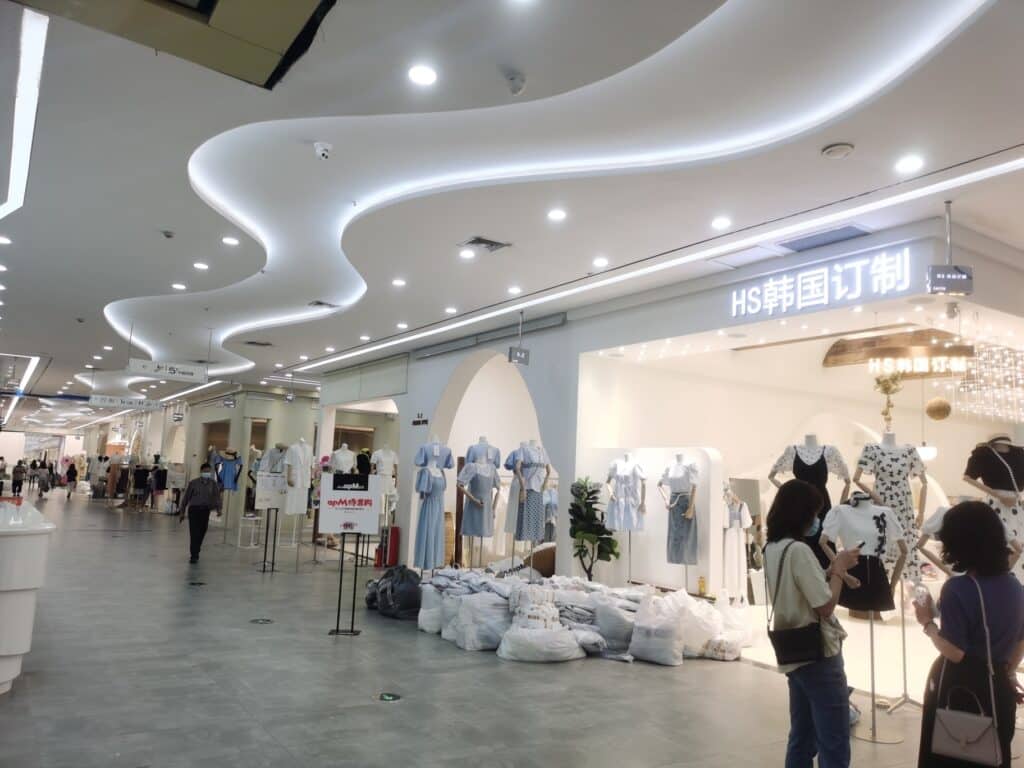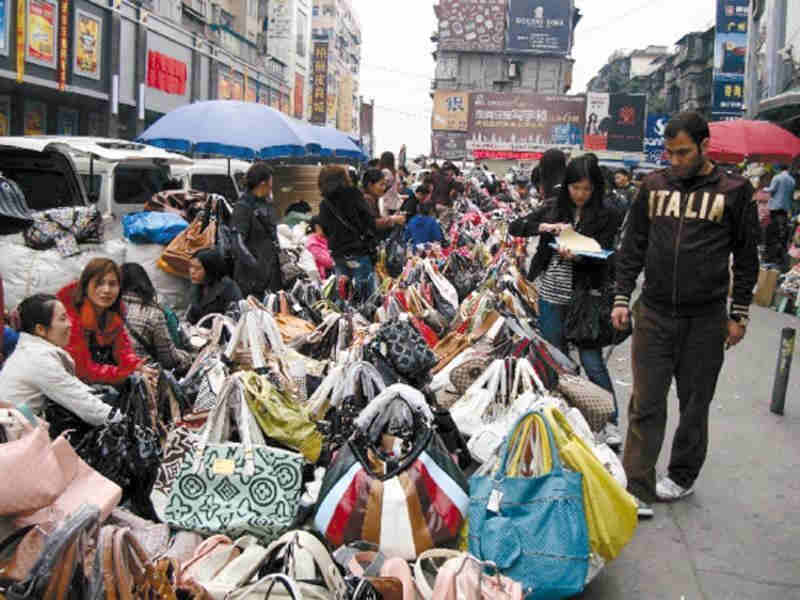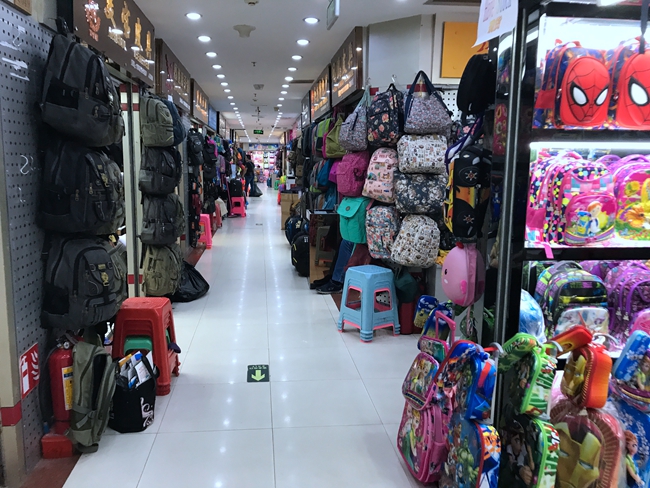Guangzhou is the world’s premier sourcing hub for wholesale bags. This buyer’s guide reveals top markets, negotiation tactics, and quality control essentials.

Table of Contents

- Preparing for Your Sourcing Trip to Guangzhou
- Navigating the Key Wholesale Bag Districts
- Master the Art of Sourcing: From Negotiation to Quality Control
- Logistics: Payments, Shipping, and Beyond
- The Alternative to Market Sourcing: Partnering with a Manufacturer
Guangzhou, the capital of Guangdong province, has earned its title as the epicenter of the global leather goods trade. For decades, international buyers, brand owners, and boutique proprietors have flocked to its vast, interconnected markets to source everything from high-fashion leather handbags to trendy PU backpacks. The sheer scale can be overwhelming, but understanding the landscape is the first step toward unlocking immense business opportunities. This professional buyer’s reference unpacks the city’s most important wholesale locations and provides the strategic insights needed to navigate them successfully.

Preparing for Your Sourcing Trip to Guangzhou
A successful sourcing mission begins long before you land in China. Proper planning is the difference between a fruitful business trip and a frustrating, costly endeavor. Setting clear objectives and preparing the necessary tools will empower you to make informed decisions quickly and efficiently.
Defining Your Product Needs and Target Quality
Before you even look at flights, you must have a crystal-clear vision of what you are looking for. Ask yourself critical questions:
- What specific types of bags are you sourcing? (e.g., leather totes, canvas backpacks, evening clutches, wallets)
- What is your target price point per unit? This will determine which markets and vendors you focus on.
- What are your quality standards? Are you looking for genuine top-grain leather, high-quality PU, or budget-friendly materials? Bring material swatches and a sample product if possible. This “control sample” becomes your benchmark for quality and construction.
Essential Preparations: Visa, Flights, and Accommodation
Navigating the logistics is straightforward if done in advance. Most visitors will require a business (M) visa to enter China, so start this application process well ahead of your planned travel dates. Book your flights to Guangzhou Baiyun International Airport (CAN). For accommodation, consider staying in the Yuexiu or Tianhe districts, as they offer convenient access to the main leather markets via the city’s efficient metro system. Book a hotel with business-friendly amenities and reliable Wi-Fi.
What to Pack: Sourcing Essentials
Your packing list should extend beyond clothes. Bring a comfortable pair of shoes, as you will be walking extensively. Other critical items include:
- A portable power bank to keep your devices charged.
- A notepad and pen for taking notes, as you may not always want to pull out a phone or tablet.
- A calculator for quick currency conversions and price negotiations.
- Business cards with your contact information translated into Mandarin on one side.
- A small magnifying glass or loupe for inspecting stitching, hardware quality, and leather grain.
Navigating the Key Wholesale Bag Districts
Guangzhou’s bag markets are clustered together, primarily around the Sanyuanli and Guihuagang areas. Each building and district has its own specialization, catering to different quality tiers and product types. Understanding their unique offerings is key to optimizing your time.
Baiyun World Leather Trading Center (白云世界皮具贸易中心)
This is arguably the most famous and comprehensive leather goods hub in Guangzhou. It’s not a single market but a massive complex of buildings. It is known for its mid-to-high-range products, including genuine leather goods and high-quality replicas of designer bags. This is the place to find excellent craftsmanship, but expect higher MOQs (Minimum Order Quantities) and prices. The ground floors typically feature showrooms, while the upper floors often house design studios and offices where more substantial deals are made.
Guihuagang Leather Market (桂花岗皮具市场)
Located near the Guangzhou Railway Station, Guihuagang is another giant in the industry, focusing heavily on a wide variety of bags, luggage, and wallets. This area is excellent for buyers looking for a broad selection of styles in both PU and genuine leather at competitive prices. It’s a bustling, energetic environment perfect for sourcing fast-fashion items and identifying current trends. The quality can vary significantly from stall to stall, so diligent inspection is required.
Sanyuanli Leather Market (三元里皮具市场)
While often used as a blanket term for the entire area, the Sanyuanli market complex specializes more in raw materials than finished goods. This is where designers and manufacturers come to source leather hides, PU fabrics, zippers, buckles, clasps, and every other conceivable piece of hardware. If you are looking to produce your own designs or need to source components, this district is an unmissable destination. It provides deep insight into the supply chain and the quality of materials available.
For a quick reference, here is a comparison of the main market areas:
| Market Area | Primary Specialization | Quality Tier | Best For |
|---|---|---|---|
| Baiyun World Leather Trading Center | Finished Handbags (Genuine & High-Quality PU) | Mid to High | Brands seeking premium quality and craftsmanship. |
| Guihuagang Leather Market | Finished Handbags, Luggage, Wallets | Low to Mid | Volume buyers and sourcing fast-fashion trends. |
| Sanyuanli Leather Market | Raw Materials & Hardware | Varies | Designers and manufacturers sourcing components. |
Master the Art of Sourcing: From Negotiation to Quality Control
Finding the right market is only half the battle. Your success hinges on your ability to communicate your needs, negotiate fair terms, and ensure the final product meets your standards. These skills separate seasoned buyers from novices.
How to Communicate and Negotiate Effectively
While many vendors have some English proficiency, using a translation app like WeChat or Google Translate is invaluable. For serious negotiations, hiring a local interpreter for a day is a wise investment. When negotiating, always remain polite and patient. Prices are almost always flexible, especially for larger quantities. Start with a reasonable counter-offer and be prepared to meet in the middle. It is often effective to negotiate for a bulk price rather than haggling over a single unit.
Understanding MOQs and Placing Orders
Minimum Order Quantity (MOQ) is the smallest number of units a vendor is willing to sell. For in-stock items, you might be able to buy just a few pieces. For production orders (items made specifically for you), MOQs are typically higher, often ranging from 50 to 200 pieces per color or style. Always clarify the MOQ, unit price, production lead time, and payment terms before placing an order. Get everything in writing on a formal purchase order or invoice.
The Critical Importance of Quality Inspection
Never assume the quality of the bulk order will match the sample perfectly. Before finalizing payment and shipping, you or a trusted agent must inspect the goods. Check for consistency in materials, color, stitching, hardware functionality, and overall construction. A small flaw on one bag can become a major issue when multiplied across hundreds of units.
While market sourcing offers variety, achieving consistent quality across large orders can be a challenge. For brands seeking meticulous craftsmanship and standardized quality control from a vetted partner, working directly with an established manufacturer offers a more streamlined and reliable path. Beldturaleather, for instance, provides end-to-end OEM/ODM services, ensuring every piece meets your exact specifications without the uncertainties of market hopping.
Logistics: Payments, Shipping, and Beyond
Finalizing your purchase involves navigating payment protocols and international shipping. Having a clear plan for this stage is crucial to get your products home safely and cost-effectively.
Secure Payment Methods
For small, in-stock purchases, cash (RMB) is king. For larger production orders, vendors will typically require a deposit (usually 30-50%) to begin production, with the balance due upon completion and before shipping. Bank transfers (T/T) are a common method for these transactions. Be cautious about using less secure payment methods and always ensure you have a clear invoice detailing the terms.
Arranging International Shipping and Freight
Most market vendors do not handle international shipping directly. You will need to engage a freight forwarding or logistics company. There are countless such companies located around the market districts. They can consolidate your purchases from multiple vendors, pack them securely, handle customs documentation, and arrange for shipment by air or sea. Air freight is faster but more expensive, ideal for smaller, high-value orders. Sea freight is much more economical for larger volumes but takes significantly longer.
The Alternative to Market Sourcing: Partnering with a Manufacturer
Walking the markets is an excellent way to understand trends and find ready-made products. However, for businesses looking to create a unique product line and build a lasting brand, a more strategic approach is often necessary.
Why Consider a Direct Manufacturing Partner?
Working directly with a factory or a full-service manufacturer offers several advantages over market sourcing. You gain greater control over the design, materials, and quality. It allows for true customization, something you cannot achieve by buying off-the-shelf goods. This path fosters a long-term relationship, leading to better pricing, priority production scheduling, and a deeper understanding of your brand’s needs over time.
The Benefits of OEM/ODM Services for Your Brand
OEM (Original Equipment Manufacturer) and ODM (Original Design Manufacturer) services are the cornerstones of private label branding.
- OEM: You provide the complete design, and the factory produces it to your exact specifications. This offers total creative control.
- ODM: You select a base design from the manufacturer’s catalog and modify it with your own branding, materials, or minor adjustments. This is a faster way to market.
For businesses aiming to build a distinct brand, the limitations of off-the-shelf market products become apparent. The real growth lies in unique designs and proprietary collections. This is where a partnership with a full-service leather goods manufacturer like Beldturaleather becomes invaluable. We transform your vision into tangible, high-quality products, managing the entire process from material sourcing and pattern making to final production and quality assurance, allowing you to focus on building your brand.



